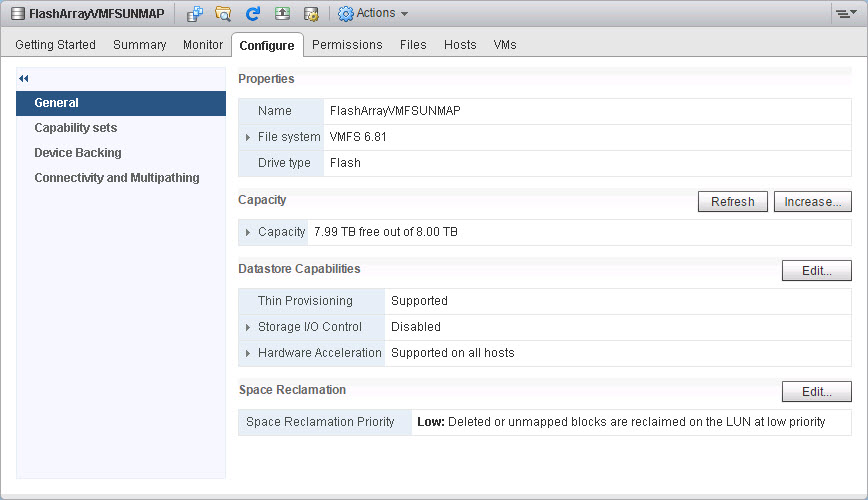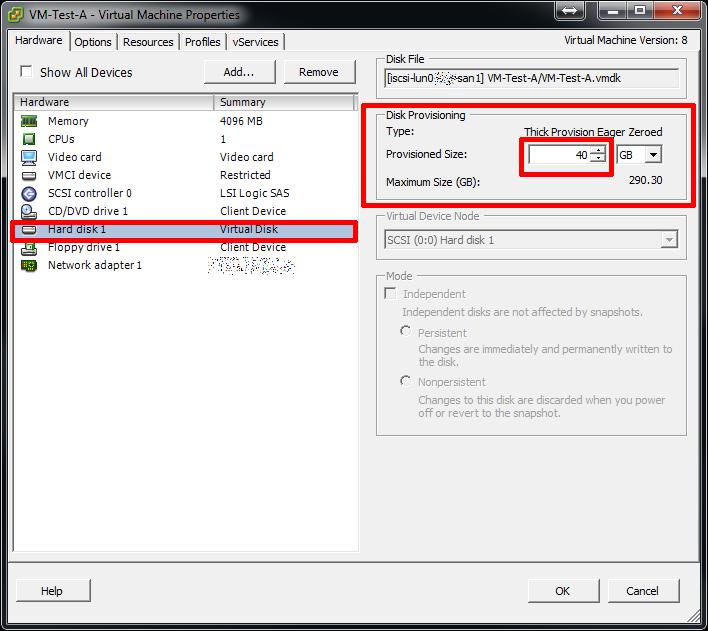

- #Pass through a physical hdd to a vm esxi 6.5 install#
- #Pass through a physical hdd to a vm esxi 6.5 update#
- #Pass through a physical hdd to a vm esxi 6.5 full#
- #Pass through a physical hdd to a vm esxi 6.5 free#
- #Pass through a physical hdd to a vm esxi 6.5 windows#
On completion of the backup and investigation using the File Explorer you can see both C and E drives, and the Windows agent executable. The other major change required for the Agent based backup was to configure the repository permissions to allow access for backup. PRDM Backup with Warning for Unsupported (RDM) DiskĪfter deploying the agent to the VM and running and configuring a backup job we can see that the entire VM is now protected. The test backup job, pRDM test, has been configured and works for the C drive, however skips the unsupported RDM disk.
#Pass through a physical hdd to a vm esxi 6.5 update#
Veeam Backup and Replication 9.5 update 3 (9.5u3) now has the ability to manage agent workloads directly from the console.Ī VM, NOPS01 has been configured with a 40GB physical RDM drive from an iSCSI share on a PX4-300d.
#Pass through a physical hdd to a vm esxi 6.5 free#
With Veeam a pRDM could only be protected by using a physical agent, either the free Endpoint Backup, now the Agent for Windows, or the Agent for Linux. Protecting a vRDM within Veeam is straightforward as a vRDM can be snapshotted by VMware. It is important to note that there is not a file as in the virtual disk, and that the guest does not have direct access to the physical storage. All I/O goes through the virtual SCSI stack.Ī VVOL is a volume on the array, and all I/O goes through the virtual SCSI stack. As a virtual disk (vmdk), or as a virtual volume VVOL.Ī virtual disk (vmdk) is a file on a file system (VMFS or NTFS) that is presented to a VM as a SCSI volume. Physical server to virtual server clusteringĪ virtual disk can be presented in two ways. A pRDM is the closest to a traditional disk from a physical array being presented to a VM, whilst vRDM adds the advantages of VMware.Īdvanced File Locking for Data Protection For clarity in this article they’re referred to as pRDM and vRDM. RDMs come in two flavours, physical and virtual compatibility modes. It is possible to mount a raw disk to a VM without losing the data on it. If you connect the hard drive to the host, it will be available to use as an ESXi datastore, nothing more. RDMs, independent disks, vmdks, and VVols. Unless you can passthrough a SATA controller to your VM, you are not going to be able to make a hard drive visible to a VM as such. The Guest recognises and mounts the USB HDD USB 3 if it is connected when the system first boots but if it is ejected and reconnected, the Guest recognises that it is there but does not mount the drive. With the addition of physical agents, centrally managed through either the Veeam console or through Veeam Availability Console, these VM’s can now be protected, providing cluster aware backups on RDMs, inside of the virtual world.īefore we dive into protecting RDMs, lets take a look at what they are, how they are different, and some competing technologies.įor block storage presented to VMware, there are four major ways to use the storage. USB HDD not mounting in Guest VM - ESXi 6.5 The Host Machine is running ESXi 6.5 and the Guest VM is WIndows Server 2012 R2 Essentials. In the Veeam world this has stopped backups from working as Veeam has traditionally accessed VMware snapshots to perform backups. The benefits of this include being able to send disk commands to the storage, and support for clustering technologies. This Raw Device Mapping (RDM) is achieved using a proxy file inside of a VMFS volume.


#Pass through a physical hdd to a vm esxi 6.5 full#
I made this little post as a reminder for myself rather than a full tutorial. You can do pretty much anything from there, except something that looks so important that I wonder why it’s not on the windows GUI: mapping local disks to VMs.
#Pass through a physical hdd to a vm esxi 6.5 install#
I built a new lab environment at home, using VMWare ESXi 5.0, which is a very nice product, if we expect the windows-only GUI 1GB HDD needed to install bloatware.


 0 kommentar(er)
0 kommentar(er)
